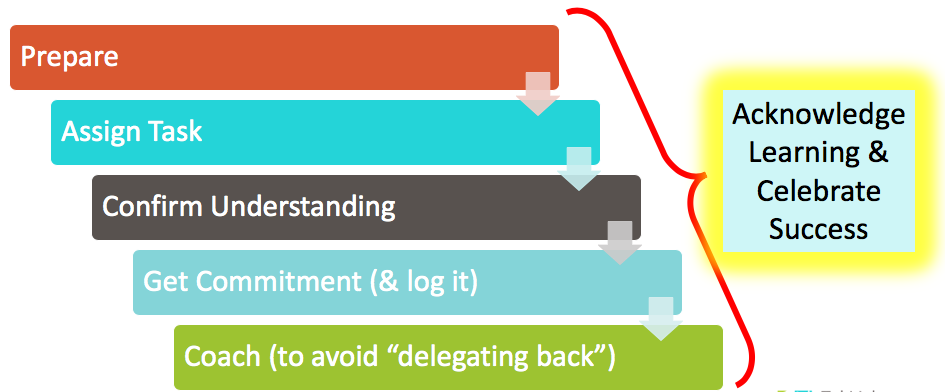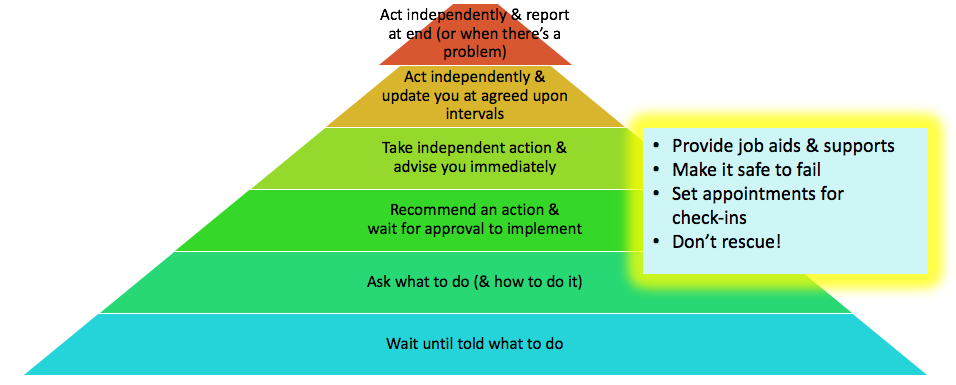
How to Master Effective Delegation in Volunteer Management
Effective delegation is one of the beautiful, but potentially challenging aspects of building a strong volunteer team. As a leader with a trained and stable group of volunteers, your job as the volunteer manager can evolve to entrusting roles to your volunteers versus doing everything yourself. The challenge is in 1) letting go of control and 2) knowing how to delegate effectively.
Letting go is something all of us “go-get-‘em” personalities struggle with from time to time. This might be something you have to consciously work on if building a volunteer team is one of your goals. At the same time, adding thoughtful delegation techniques may help you let go as you gradually build trust in yourself and your volunteers.
Why Master Delegation?
When working with volunteers, saving time isn’t the only issue at stake when poor delegation occurs. Paid staff may be more resilient and able to accommodate a dysfunctional delegation style. They are getting paid and have come to expect it in many workplaces.
Volunteers? Not so much.
It doesn’t take too long for volunteers to get frustrated with the lack of information. They may feel “dumped on” if they are assigned tasks they didn’t really agree to, or take more time than they have on hand to give. They may become discouraged when they are asked to re-do a task multiple times because they weren’t given clear guidelines in the first place or the process for approval keeps changing on them.
Poor delegation hurts not only your productivity. It also erodes your team morale and, ultimately your volunteer retention.
So, it bears taking a good, hard look at.
Certainly, some volunteers are able to “go with flow” more than others. But, by improving your delegations skills you can meet everyone’s need to have clear information and a chance to make a big difference at your organization.
Effective Delegation Step 1: Be a Great Delegator
Effective delegation starts with you
Know Your Team
Different people need different information, in different ways. So, the first step is knowing their preferences, so you are sure to deliver information in a way that suits their needs.
Stay Organized
Gather all the necessary info needed for the project BEFORE you assign it. For example, if it’s a document, what are the graphic standards (i.e. font, layout, 508 compliance, etc.)? What are your expectations around layout (page numbers, graphic design, etc.) When is the interim draft due? When is the final due?
Also, be clear about the review process from the beginning. Who will review the drafts, and how will it be decided when the final result has been achieved? This isn’t always easy to do because some projects take more tinkering with than others. But, if you can at least lay out a general process, it will help your team feel more in control, confident they are on track, and aware if they are not.
Provide Clear Guidelines
Have a list of good examples to live up to, from the start. If there are other products or projects that have been successful, you need share them (or links to them) up front, before they get started; it will help folks visualize what the end result might look like.
Put it in Perspective
Explain the concept and context around the project more fully. People need to know how the task fits into the larger picture. Why is it important? How does the product or project interface with others? You want your volunteer teams to know how each task makes a difference and adds to the whole.
Make Yourself a Resource
You might already encourage your team to contact you if they have questions, but I think people really need something more concrete. If you are a busy person, when can they count on my undivided attention? Is it first thing in the morning via email? During a 15 minute meeting they’ve requested through your calendar software? A verbal check in at the end of the day? Consider what works best for both yourself and the other person, and then stick to it.
Effective Delegation Step 2: Empower Your Team
When you think of delegation, you might think it means relinquishing all control in the relationship. But effective delegation isn’t just about handing over the reins and walking away. There are many options for levels of autonomy and initiative, based on the task and the person assuming it.
No matter to what level of task you’re thinking of delegating, empower your team through the following steps.
1. Prepare – Choose the appropriate person/team, determine your expected results, decide on the volunteer’s level of authority, anticipate possible problem areas, etc.
2. Assign the Task – What will be the task’s deliverables, deadlines, and expectations for communication and updates? What frequency and content will you need and will you want it in person, via email, or another way?
3. Confirm Understanding – Ask the volunteer “how would you explain this task to a fellow employee?” Do they have the tools and resources to be successful? Do they understand what the task will require?
4. Get Commitment – Re-affirm the volunteer’s level of autonomy and ask for a verbal affirmation that they accept and agree.
5. Coach (to avoid “delegating back”) – When the volunteer hits roadblocks, offer confirming and corrective feedback. If they need additional help and are essentially asking you to take the task back, refer them to resources that can help (human and otherwise).
6. Require Accountability – Set dates for status checks and a develop a contingency plan.
7. Acknowledge Learning & Celebrate Success – Reflect on results yourself and with the volunteer. Publicly acknowledge the volunteer’s success if they are comfortable, and privately praise their personal growth.
Effective Delegation Step 3: Grow Your Team’s Capacity
You can build more tasks and freedom into the volunteer role as you both get more comfortable, repeating the steps each time. In order to encourage that growth, you don’t want to just walk away. Support the volunteer’s autonomy and confidence by keeping these in mind:
- Provide job aids & supports (checklists, tip sheets, reference tools, mentors, coaches, etc.) – We all appreciate guidance, no matter how independent we are. Your volunteer wants to do the job correctly and any materials you can provide to help them understand the steps and expectations will reassure them that they’re on the right path.
- Make it safe to fail – Mistakes are learning opportunities and rarely irreversible. Encourage your volunteer to reach out to you when mistakes are made so you can bring in support when needed.
- Set appointments for check-ins – Set them and then actually do them. These are a great chance for your volunteer to share tidbits that may not seem important enough to warrant an email or phone call. Plus, these are wonderful opportunities for you to gain feedback from your volunteer. One-on-one time with your volunteer (especially one you’re promoting into leadership) is always going to be a beneficial conversation.
- Don’t rescue! – Let your volunteer figure things out. If there’s a problem, remind them that you believe in their ability to fix it (and remind yourself that they are perfectly capable). Of course, this doesn’t mean hanging them out to dry in a real emergency. Give your volunteer the space to learn and grow in their role in order to gain that confident autonomy that will make them a rockstar volunteer.
Your volunteer team can be a super powerful asset to you and your organization. It takes some time to build and it takes more time to find volunteers who want and can handle leadership roles.
When you find those potential leaders, empower them with clear communication and confidence. They already love your mission and your increased trust in their volunteer leadership abilities only deepens that love.
It’s sometimes hard to take your hands off the wheel, but you can trust yourself to know who, when, and how to let go in order to let your volunteer team grow.







